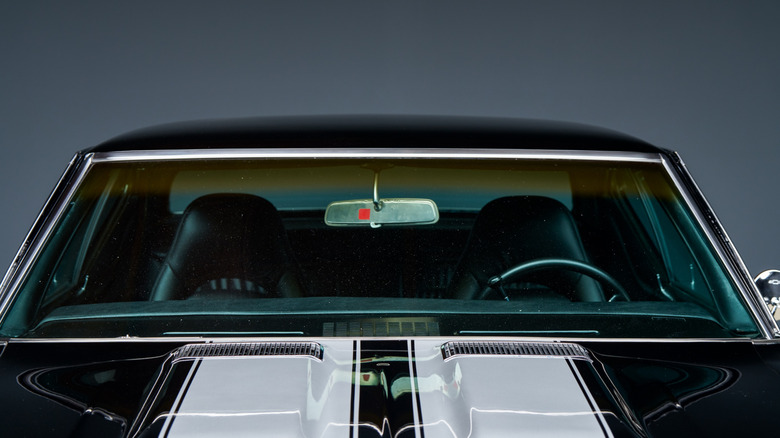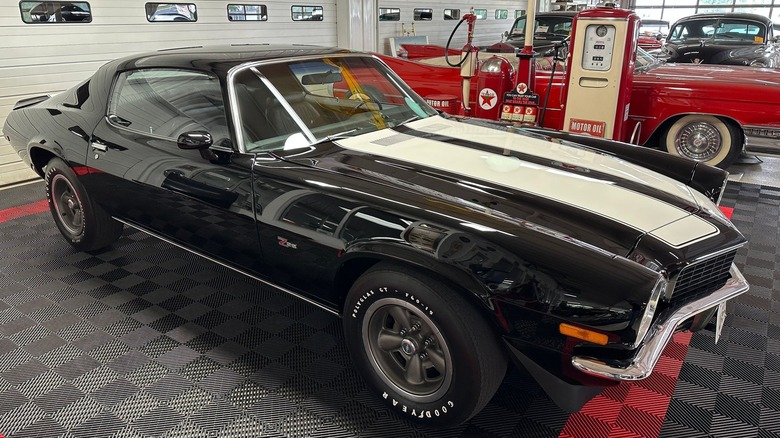Why Do Some Classic Cars Have Wires In The Windshield?
As automotive technology evolves to flashy infotainment screens and advanced driver-assistance systems, the glass in your windshield may contain hidden technology. In fact, many modern vehicles incorporate some ingenious technology in their windshields that most drivers rarely notice. For starters, if you look closely at the glass near where the wipers rest, you might spot fine wires or conductive coatings as part of the front windshield defroster system. These heating elements melt ice and clear condensation, improving visibility during cold or damp conditions. With that said, have you ever spotted those peculiar wires embedded in an older car's windshield?
Well, pay close attention to the windshield of some classic cars like the 1970 Chevy Camaro Z28, and you might notice that some have thin, crisscrossing wires embedded on the glass. One might think those visible wires are a part of an old windscreen repair job or cracks. In reality, they're intentional, just like those lines on your car's rear windshield. In fact, they have a very specific and practical purpose that modern technology has replaced — serving as a built-in radio antenna.
Long before hidden automotive tech became standard, classic vehicles used traditional metal antennas that were an emblem of success. However, while these telescopic tubes were crucial in capturing AM and FM radio signals, they were prone to bending and breaking. Plus, some were visually unappealing and affected the sleek design of most vehicles. To fix this, most manufacturers (like General Motors) opted to embed the antenna directly into the windshield glass.
Of course, windshield-embedded antennas didn't offer a strong reception (especially in rural or mountainous areas) similar to their traditional metal antenna counterparts. But they were very instrumental in picking up AM/FM signals and routing them to the car's radio system. Plus, they eliminated the risks of antennas snapping off in car washes or vandalism. Also, by doing away with protruding mast antennas, automakers achieved a sleek and streamlined design.
Reasons windshield antennas have disappeared over the past decades
With all the benefits embedded windshield antennas offer, you must be wondering why almost all car manufacturers silently ditched windshield antennas. At the time, embedding the radio antenna inside the windshield was a sleek design shift seen as an upgrade from the traditional whip antennas. But as promising as the idea was (just like these classic car features that most people miss in modern vehicles), it had some drawbacks that eventually led to its demise.
For starters, windshield antennas had weak signals. Unlike traditional metal antennas that stood clear of obstructions, windshield antennas had to receive signals through the glass and the car's metal framework, which could distort or weaken them. Sure, the difference could not have been noticeable when driving in urban areas with strong broadcasts. However, the limitations were apparent if you were travelling through remote regions or places with a weak AM station.
There is also the issue of cost. Imagine this: if your radio antenna got damaged, you'd have to replace the entire windshield to fix the problem — and that was not a cheap fix. And as car designs and technology evolved through the years, manufacturers started to look for ways to tuck away antennas without compromising functionality. That's why most modern cars have a little shark fin-like structure at the rooftop's back end. Not only does this rooftop fin serve as an AM/FM signal receiver, but it also enhances the car's aesthetic and helps pick up internet and cell-phone signals.

